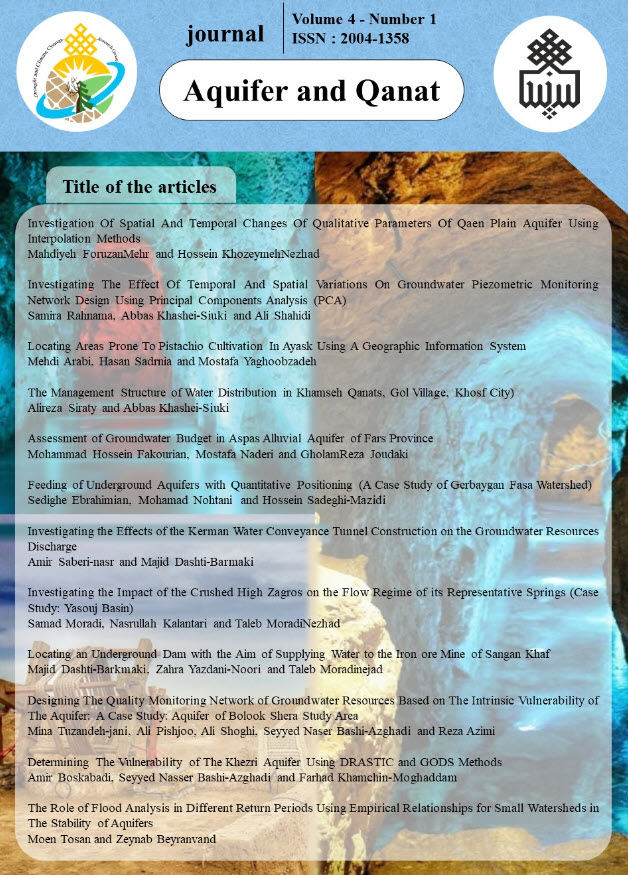Document Type : Original Article
Authors
1 MSc Student, Department of Surveying (Geomatics) Engineering, Faculty of Engineering, University of Zanjan, Zanjan, Iran.
2 Assistant professor, Department of Earth Sciences, Institute for Advanced Studies in Basic Sciences (IASBS), Zanjan, Iran.
Abstract
Water crisis in Iran, especially in recent years, highlights that quantifying the water budget is a vital information for management of water resources. Water budget in Aspas alluvial aquifer (728.81 km2) of northern Fars Province is evaluated during the observation period (2002-2017) based on climatic and hydrogeological data. Then calculated changes in annual aquifer storage using water budget approach are compared with corresponding values calculated using actual water table fluctuation, implying a good agreement. Water budget approach indicates that Aspas aquifer has experienced storage loss by 29.34 million cubic meters (MCM) per year during the observation period 2002-2017, resulting in mean annual water table declining by 0.82 cm per year. About 78% of the volume of groundwater inflow is abstracted again by deep and semi-deep wells. As a result, groundwater over-exploitation due to pumping wells is the main cause of water table drop in Aspas aquifer during the study period, however, droughts (for example in years 2013-2017) may intensify the water table declining and reducing groundwater storage. Groundwater abstraction rate, therefore, must be reduced to prevent further water table declining in Aspas aquifer. Strategies such as reduced cultivated area, increased irrigation efficiency and cultivating low water requirement crops can decrease groundwater abstraction rate.
Keywords
Main Subjects

